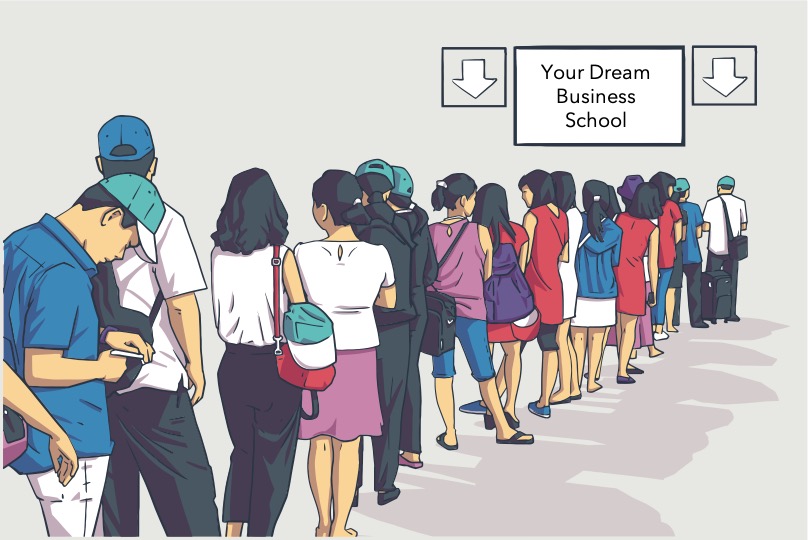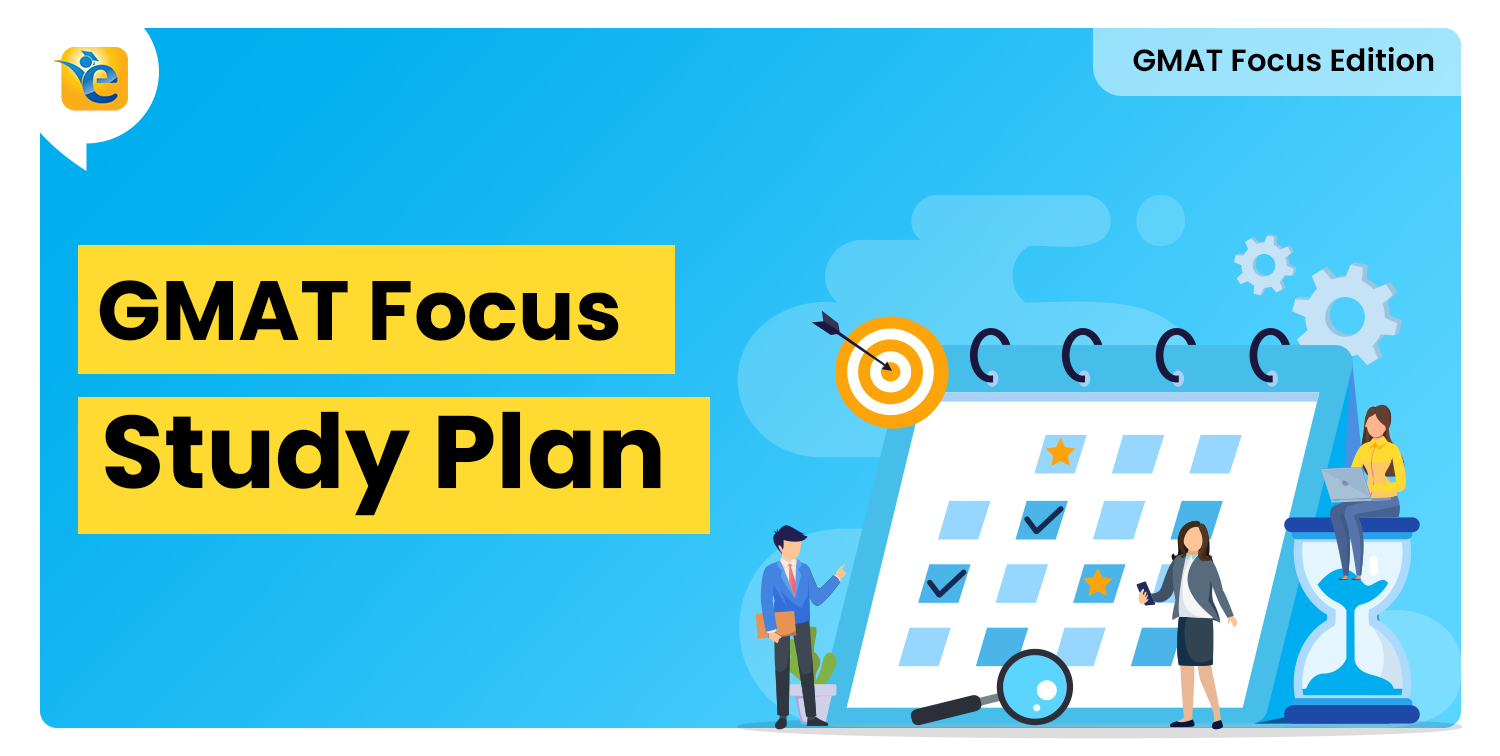Creating an MBA Application is an arduous process, crafted over an intense 2-3 month period of introspection, having gone through endless iterations, with hundreds of pain-staking reads to ensure every word fits perfectly. The application is then sent across the desk of a 2nd year MBA Admissions Team member who scans it for about 10 minutes before sealing its fate. Such is the life cycle of a typical application, and timing (or, “when the application is submitted”) is often the difference between an Admit and a Ding.

For a greater perspective, I am an MBA Applicant with an admit (+$80k scholarship) from a US Top 20 B-school in Round 1 and four other interview invites that I received in Round 2. Without the advantage of applying early, I most definitely would not have received the Round 2 interview invitations, severely limiting my choices. Let me explain why.
Application Quality
Getting an MBA is the biggest financial investment most of us have committed to making thus far – so it stands to reason that the MBA Application be created with the utmost care and expert assistance. Why “expert assistance,” you may ask?

Well, several of the components of the MBA Application are unique to the MBA Application, which means that applicants typically have little to no experience creating them. For instance, an MBA Application Resume is very different from a Job Application Resume, and an MBA Application Essay is vastly different from a college essay.
Here are the 5 types of essay a business school typically asks for
I’m no advocate for superfluous expenses, but a quality MBA Application Consultant is a prudent investment in my view as it has the potential to make or break your chances of admission. Now, the best Application Consultants prefer to work with a select few clients over a period of 2 to 3 months to ensure a quality application.
It is not uncommon for these consultants to engage with their clients throughout the admissions cycle as the applicants apply to multiple schools over several rounds. This means that the best consultants are often booked up from the month of July to February. If you started late and were to approach these consultants in months leading up to Round 2, they are unlikely to accommodate you. This loss of opportunity will have a cascading impact on the quality of your application and then on your chances of success.
My experience
As a personal anecdote, I approached a top consultant in June and began our engagement in July. I enjoyed working with her and attribute much of my success in this admissions cycle to her inputs.

I recommended this consultant to a friend of mine, who started her application process in November (targeting Round 2); the consultant politely turned down my friend’s request to work together as her schedule got booked in August that year. As a compromise, my friend had to work with a lesser consultant who was not as helpful, professional, or prompt with feedback, and my friend could only submit one application in Round 2 as opposed to the five applications she had initially planned to submit. She was not invited to interview.
Here are a few MBA application tips from a senior admissions consultant
Want to create a quality application? Start working with top consultants early, preferably in May/June, when their schedule is still open, and discounts for early enrolment are on offer.
Did you know a GMAT score of 730+ yields incremental $500K in ROI? Start your GMAT Preparation by Signing up for our FREE Trial and get access to FREE online GMAT preparation resources. We are the most reviewed GMAT preparation company on GMATClub with more than 1870 reviews.
Networking
Schools love it when you make them feel special. Schools, now more than ever, place emphasis on “candidate fit,” and the “Why our school?” question has become a standard part of an MBA Application. It may come up in your essays, application, or interview, but it is sure to come up. A failure to adequately answer this question highlights a lack of clarity, lack of research, and lack of passion for the school – all of which weigh negatively and are likely to get you a “Ding.”
A great way to show genuine interest in the program (and to assess fit with the school) is to network with members of that school. Speaking to various people from the school helps you gather information that is not available on the internet (making your essays richer) and understand whether you will genuinely enjoy your years at the school (helping you with school selection).

Personally speaking, conversations with representatives from a few schools genuinely turned me off, and this helped massively with my school selection.
In an ideal world, every student, professor, and admissions officer you approach would respond positively to your request to chat – but that is not the world we live in. MBA Academic Cycles are hectic, and there’s little time to network one-on-one.
So, the best time to approach these representatives is over the summer! Admissions Officers are free for a chat considering Round 3 applications are over, College Professors can make time for you since they don’t have classes to teach, and Students want to talk to you given that they are past the stressful job-hunting phase and are pursuing a fulfilling internship. Further, the admissions office also organises several virtual and physical activities in May and June where students can truly get to know the program.
My experience
As a personal anecdote, I had to wait for as long as three weeks for a 10-minute conversation with an MBA Candidate before Round 2 applications. Over the summer, however, my engagements with the students lasted hours where I had the opportunity to learn and define my fit with the programs.
Application Strategy
School Selection is by far the toughest part of the application process, given that MBA Applications are often a crapshoot. Nobody – not even experienced Admissions Consultants – knows the schools an applicant is likely to get admitted to, so having a sound application strategy helps you maximize your chances of an admit. The opportunity to apply over several rounds is critical in devising this strategy.

With the luxury of applying over two rounds, a candidate can test out his “fit” using an eclectic selection of schools from a variety of different ranking windows. Based on which of these schools respond most positively to the candidate, they may choose to apply to similar schools in the second round (to maximize chances of admit).
My experience
For instance, I applied to five schools in Round 1: an M7, a Top 10, two Top 15s, and a Top 20. I received two waitlists (one from the Top 10 and one from a Top 15), a scholarship admit from the Top 20, and rejections from the others. I used this result as an indication that Top 20 schools were interested in my background and applied to two more Top 20 schools in Round 2. I received interview invites from both those schools.
Without the benefit of a second round, I would be shooting blind, applying to schools that are not receptive to my background, and getting rejected by all these schools. This event has happened to several friends of mine and is not a fun experience. Applying in Round 1 gives you a buffer you can use to experiment with your school selection and then apply to schools that are likely to admit you in Round 2. This method is a sure-shot way to maximize your chances of getting admitted to a top MBA program.
Waitlist Navigation
Admissions Officers have the unenviable responsibility to ensure ethnic and professional diversity in their incoming class.

As they cannot see the future and are unaware of the mix of applicants the next round may bring, officers often “Waitlist” candidates that are promising but not promising enough to offer an admit. These waitlisted candidates are assessed in each of the following rounds and are offered interview invites or admission decisions in that round.
Did you end up on a Business School waitlist? Read this article to know how to get off this waitlist
The periods between the decision day of one round and that of the next round gives an applicant time to strengthen his candidacy and re-affirm his passion for the program. You may choose to retake the GMAT, accrue professional accolades, or extra-curricular achievements.
My experience
For me, I reaffirmed my passion for the programs after being placed on the waitlist in Round 1 and updated them about my professional achievements. I received interview invites from both the schools in Round 2, one in Top 10 and another in Top 15 in the US News rankings.
If you are an international applicant like me and choose to apply in Round 2, a “Waitlist” decision for you is as good as a rejection because, by the time Round 3 decisions roll out, it is too late to start the F1 visa application process. So, apply early!
Financial Aid
Over $350 Million in Financial Aid was offered in 2019, and a large chunk of this sum is offered in Round 1. Schools seek to reduce “yield” (number of candidates choosing a competing school over theirs) to improve their rankings. In order to reduce “yield,” Schools offer promising applicants financial aid to lure them. This pool of money keeps shrinking as we go further into the admissions cycle.
The financial aid offers are plenty and generous in Round 1 as the entire Financial Aid pool is up for offer. In the subsequent rounds, the pool is severely diminished with practically no Financial Aid available to final round applicants. An applicant may also leverage a scholarship offer from one school into receiving financial aid from another school – as there is money to spend in the Round 1, this is more easily done in the earlier than in the later rounds.
Financial Aid is critical for those funding their education and is often an afterthought for most applicants. For instance, a $200k student loan (where an applicant would fund 100% of his two-year MBA) would balloon into a $350k repayment (at 9.5% interest, estimated using the Prodigy Finance loan calculator), requiring 10 years of aggressive payments to pay off successfully. Applying in an earlier round would increase your chances of getting financial aid, reducing your debt, and contributing to your financial freedom.
Conclusion
The benefits of applying in Round 1 transcend the obvious. The strategic, qualitative, and financial benefits of an early application are substantial, and from my experience, critical to success in navigating the admissions cycle. I applied to 6 schools in the 2018 Round 2 and came away with zero admits. In 2019, I applied in Round 1, received one admit (so far), and an $80k scholarship from a US Top 20 B-School, and 4 more interview invites from top 10, 15, and 20 business schools. I hope my experience helps you.
In case you’re just starting with your MBA journey and don’t know where to start. Start with taking the GMAT. Use these free GMAT resources and get started.














